 |
|

On this page: Ergonomics
|
::. Industrial and Shops ErgonomicsLifting Right | Healthy Backs | Warm Ups | Strengthen your Back | Vibrations | Hand Tools Lifting with Proper PostureLifting is strenuous— it requires proper training and technique. By lifting with your large, strong leg muscles instead of the small muscles of the back, you can prevent back injuries and reduce low back pain. There are five steps to follow when lifting an object:
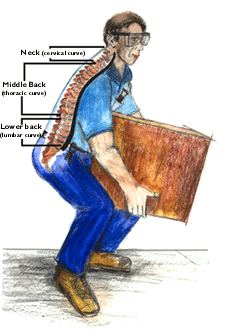
Large or Heavy Loads. Overhead Loads. If a load is above your shoulders, use a step stool to elevate yourself until the load is at least chest level— preferably waist height. Pull the object close to your body and then lift. Remember to maintain your curves — use your arms and legs to do the work. Maintain a Healthy BackCheck out: "Remember - Maintain Your curves"
In order for you to understand what is good posture and what is bad posture— let's take a look at how your back is designed: Three Curves of Your Back: Your back is composed of three natural curves that form an S-shape. When your three natural curves are properly aligned, your ears, shoulders, and hips are in a straight line. Without support from strong, flexible muscles, your back loses its three natural curves. Poor posture can lead to pain and serious injury. When you use good posture, your back is aligned in three natural curves supported by strong, flexible muscles. Good posture helps prevent back strain and pain. Warming Up for Work
Hold each position for 20 seconds and repeat 3 times before work.
Maintaining a Healthy Back with Exercise and RestIt doesn't take much time to improve the strength and flexibility of your back. In just 10 minutes a day, you can perform a few exercises, which can prevent a lifetime of low back pain!
This exercise strengthens your stomach muscles:
Aerobic Exercise Aerobic exercise also stretches and strengthens the muscles that support your low back, which combined with healthy eating can also help you maintain your ideal weight. If you're overweight, the extra pounds add to the strain on your low back. Aerobic exercise like walking, can help you lose weight. Proper Rest The best position for resting the back muscles is lying on your back on your living room floor with a pillow under your knees and a rolled up towel under your neck. You can also lie on your side in the fetal position— bend the knees to reduce strain on the low back and put a pillow between your knees, and under your head and neck to keep them level. Whole-Body & Hand/Arm VibrationWhole-body vibration is experienced in any work condition that involves sitting, standing, or lying on a vibrating surface. Excessive levels and durations of exposure to whole-body vibrations may contribute to back pain and performance problems. If you spend a considerable amount of your work day on a vibrating seat or floor and experience any of the following signs or symptoms contact your Occupational Safety & Health Specialist.
Hand-arm Vibration Vibrating hand tools or work pieces transmit vibrations to the holder, and depending on the vibration level and duration factors, may contribute to Raynaud's syndrome or vibration-induced white finger disorders. These disorders show a progression of symptoms beginning with occasional or intermittent numbness or blanching of the tips of a few finger to more persistent attacks, affecting greater parts of most fingers and reducing tactile discrimination and manual dexterity. If you notice the onset of any of these symptoms, contact your Occupational Safety & Health Specialist. The following recommendations can help reduce the likelihood of developing hand-arm vibration syndromes:
Hand Tool Use & Selection PrinciplesImplementing the following suggestions for proper selection and usage of hand tools will help reduce the likelihood of developing work-related musculoskeletal disorders (WMSDs) in the hands, wrists, and arms:
If your job involves the frequent use of hand-tools and you frequently experience numbing, blanching, pins-and-needles, or dull pain in the hands or forearms, contact your Occupational Safety & Health Specialist. | ||
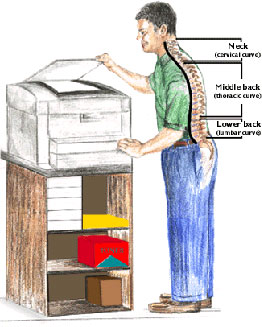 The muscles in the back are unlike many other muscles in your body— they are almost always in use. They hold your torso in an upright position throughout your day. They assist you every time you pick something up, whether it's a pen or a concrete block. They support posture while you sit in your chair, and they even work at night when you sleep.
The muscles in the back are unlike many other muscles in your body— they are almost always in use. They hold your torso in an upright position throughout your day. They assist you every time you pick something up, whether it's a pen or a concrete block. They support posture while you sit in your chair, and they even work at night when you sleep.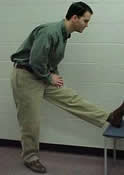
 Just as an athlete prepares before playing a sport, you too should prepare before work to help prevent back injuries. These slow stretches help prevent back injuries and make your muscles more flexible.
Just as an athlete prepares before playing a sport, you too should prepare before work to help prevent back injuries. These slow stretches help prevent back injuries and make your muscles more flexible. 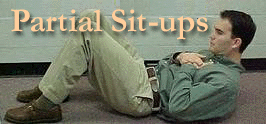
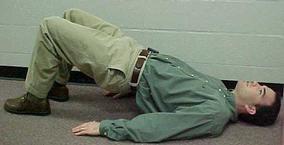
 This strengthens your back and leg muscles:
This strengthens your back and leg muscles: